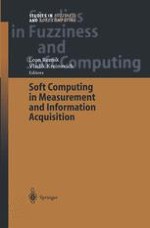2003 | OriginalPaper | Buchkapitel
Why Two Sigma? A Theoretical Justification
verfasst von : Hung T. Nguyen, Vladik Kreinovich, Gennady N. Solopchenko, Chin-Wang Tao
Erschienen in: Soft Computing in Measurement and Information Acquisition
Verlag: Springer Berlin Heidelberg
Enthalten in: Professional Book Archive
Aktivieren Sie unsere intelligente Suche, um passende Fachinhalte oder Patente zu finden.
Wählen Sie Textabschnitte aus um mit Künstlicher Intelligenz passenden Patente zu finden. powered by
Markieren Sie Textabschnitte, um KI-gestützt weitere passende Inhalte zu finden. powered by
Abstract. For a normal distribution, the probability density p(x) is everywhere positive, so in principle, all real numbers are possible. In reality, the probability that a random variable is far away from the mean is so small that this possibility can be often safely ignored. Usually, a small real number k is picked (e.g., 2 or 3); then, with a probability Po(k)≈ 1 (depending on k), the normally distributed random variable with mean a and standard deviation σ belongs to the interval $$a = [a - k\cdot\sigma ,a + k\cdot\sigma $$The actual error distribution may be non-Gaussian; hence, the probability P(k) that a random variable belongs to a differs from Po(k). It is desirable to select k for which the dependence of Po(k) on the distribution is the smallest possible. Empirically, this dependence is the smallest for k є [1.5, 2.5]. In this paper, we give a theoretical explanation for this empirical result.
